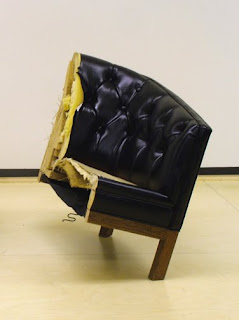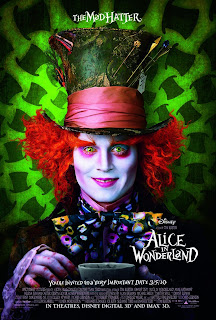Flâneur, something Baudelaire defined loosely as a "gentleman stroller of city streets," or more directly and gender non-specifically, "a person who walks the city in order to experience it," is a term derived obviously from the French, those lackadaisical and aimless walkers. It is a term I had not had the pleasure of knowing until just days ago when I saw it on the "internet." It is a term that explains me in ways English simply doesn't provide for satisfactorily. Also, it bears a comfortable resemblance to my last name. This aforementioned "internet" also informed me of a reading that was going to take place at the newly located, local and independent bookstore, Elliott Bay Book Company, Saturday night at 7 pm.
Now, to divert attention from this reading for one moment, I will talk about the bookstore. This wonderful independent bookstore once lived in Pioneer Square, a little historic district in the south of downtown Seattle, in an old building with old wood floors and old wooden bookcases and old stairs made of wood. It was a comfortable place and the floor creaked a bit when you walked across it. I liked it and would often find myself there after a bout of flâneurism, sometimes buying something from the bargain section, sometimes not. Then it decided to close. It moved to the illustriously hip and gay and bar-ridden Capitol Hill, a flâneur's dream come true. To celebrate the arrival of Elliott Bay Books, Capitol Hill threw a party with a beer garden, food (from Via Tribunali pizza, Elliott Bay Cafe, and Oddfellows) and bands, all out in the closed off street in front. It was a beautiful sunny Seattle Summer-ish day and there were a lot of beautiful people strolling and eating and drinking, in celebration of books! I bought three books that day (Everyman and Exit Ghost by Philip Roth and Oracle Night by Paul Auster, both authors which you should read). The new location is better, I think, and still appropriately woody and old-seeming.
The reading took place below the bookstore in a musty basement with old books lined up along the wall behind the stage for effect. Although there were lights hanging everywhere about the old basement, it still seemed dark. Wooden chairs with blue cushions were set up in uncommitted rows and were sparsely occupied by people in groups of two or three, one chair in between like the unused urinal between men in public restrooms.

The book, Ten Walks/Two Talks, was written by two men named Andy Fitch and Jon Cotner. It was published by Ugly Duckling Presse, an independent writer-and-artist run press out of New York City. Beforehand, I overheard Jon Cotner talking to the girl who would be introducing them and telling her that she need not say that Andy is not here, stuck in Wyoming in the snow, and that rather they would "maintain the illusion" that the man accompanying Jon to the stage was Andy. The two men, after a few minutes, were introduced and came up to stand behind the dais, at which time it was explained that the man beside him was, in fact, not Andy who was stuck in snow in Wyoming, but would be reading his parts nonetheless. I do not recall this man's name. The idea of the book was born from two projects, the first being Andy's alone, in which he walked in New York, aimlessly as it were, for sixty minutes on sixty consecutive days and would subsequently write sixty lines about each. The second project was the both of theirs and it involved the recording of forty-five minute talks in stationary places about New York, of which two were chosen and distilled for this book.
The reading included a segment of a walk, then some of talk one, then another segment of another walk, then some of talk two. They traded off line for line on the walks and each had a voice in the dialogue. Throughout the reading of the first walk, I assumed that they took these walks together and each wrote thirty lines. This I found not to be true. I wished that only one person read the lines of the walk, so that I could be sure if it were the content that I thought didn't flow or if it were just the back and forth dual nature of the reading. Either way, it didn't seem like it flowed poetically or in action. I like the images (there was one in which a woman got out of a car and clenched her butt muscles). It seemed like it could be successfully transmitted if singular in voice. As for the talks, I liked one but not the other. One occurred in Central Park and one in a natural foods market they call simply WF. The Central Park conversation seemed clipped and staged, very unlike real conversation, as if they were too aware of themselves and said pseudo-philosophical things in place of the normal fart jokes of lady ogling. They talked aesthetically about their surroundings and I couldn't seem to get interested in it. The second talk was better and much more like a regular dialogue, as they talked in the table-and-chairs area of their New York WF. It seemed, though, that these talks were nothing incredibly special besides the fact that they were recorded and published in an edited form. Couldn't many of us do the same thing?
All in all, I liked it and didn't. I liked the concept very much and wished that I, myself, had come up with and executed it. Walking and talking are such intertwined activities and both can be beneficially aimless. To see this in written form may change my mind, but I feel like it was like weak tea when you really want to taste it. Like weak and slightly pretentious tea. Nonetheless, check it out. I could be wrong.




